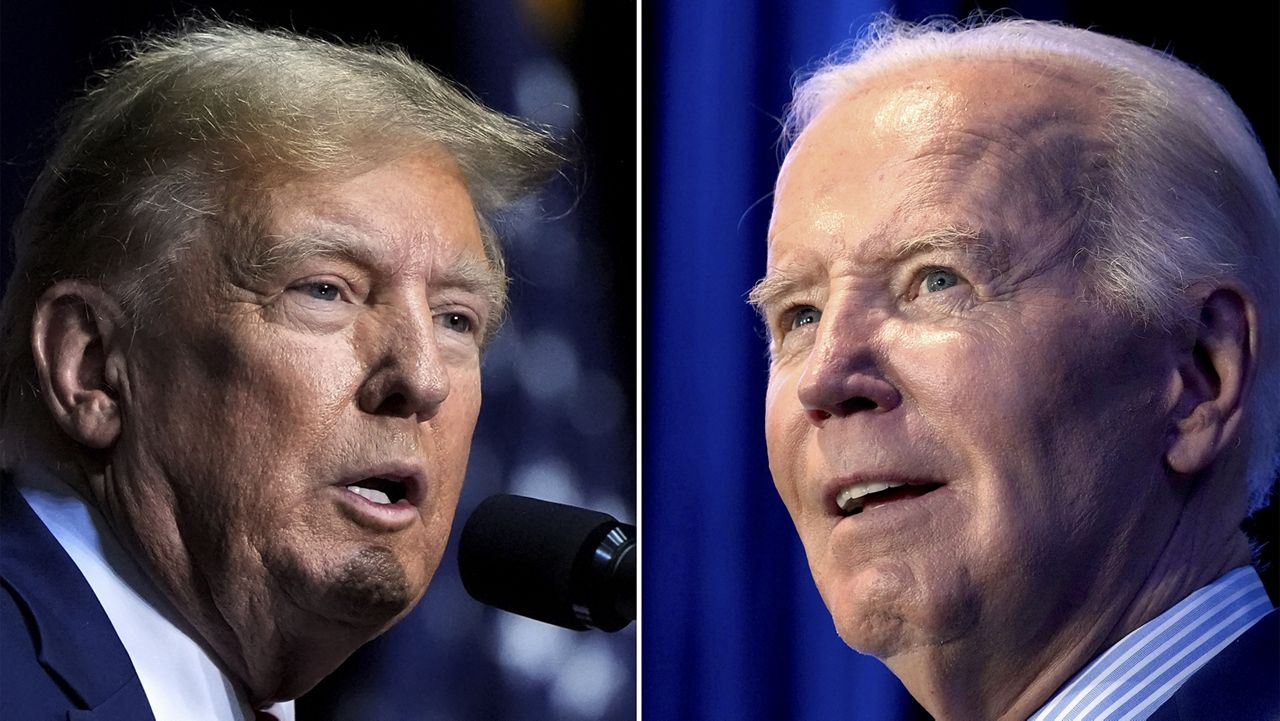New York’s presidential primaries on Tuesday were largely uneventful since Joe Biden and Donald Trump already secured the required number of delegates to be their respective parties’ presumptive nominees. However, the state was the latest in a trend of voting patterns that could outline potential weaknesses for both candidates heading into the general election in November.
According to the Associated Press, with 93% of the vote counted as of Wednesday afternoon, Biden received 92% of the Democratic vote. Also on the Democratic Party ballot was Minnesota Rep. Dean Phillips, who suspended his campaign, and author Mariane Williamson, who exited the race but recently re-entered. Williamson received 5% of the vote while Phillips got 4%. Out of more than 294,000 total votes counted at so far, that adds up to more than 25,000 votes for candidates other than Biden.
Besides other names on the ballot, Biden also faced some organized opposition. The New York Working Families Party, a progressive third party that has influence over Democratic candidates and policy, encouraged Democratic voters to leave their ballots blank in response to the Biden administration’s handling of the ongoing Israel-Hamas war.
Other such “protest” vote movements have occurred in previous primary states. Voting on the same day as New York was Rhode Island and Connecticut. In those contents, an “uncommitted” option got 15% of the Democratic vote in Rhode Island and 12% in Connecticut. While a similar vote margin to protest campaigns in Minnesota and Michigan, the raw total votes in those Northeastern states for “uncommitted” was relatively small — 3,700 and 7,400 respectively.
The actual result of the blank-vote effort against Biden in New York won’t be known right away, as blank votes aren’t reported in initial unofficial results. In the 2020 Democratic primary, which was long past the time Biden nailed down the presumptive nomination, blank and void votes made up about 8% of the vote in New York, though many variables can go into those being classified as such.
When it comes to his Republican counterpart, Donald Trump received 82% of the GOP vote in New York’s contest on Tuesday as of Wednesday afternoon. Appearing on the Republican ballot besides Trump was former U.N. Ambassador Nikki Haley, former New Jersey Gov. Chris Christie and businessman Vivek Ramaswamy, all of whom suspended their campaigns long before this contest. At this time, Haley received 13% of the vote — more than 20,000 votes — continuing to garner some level of support from Republican voters even though she dropped out of the race a month ago.
The margin is similar to other recent Republican primaries in other states. Haley got 14% in Ohio, 14% in Florida and 18% in Arizona during their primaries in March.
Besides Haley, Chris Christie received 4% of the vote and Ramaswamy got 1% in New York.
In some states, voters registered in other parties can vote in primaries, meaning some Trump defectors may not be registered Republicans, making a “protest” vote against him hard to fully gauge. New York, however, is a closed primary, meaning those who voted for Trump or other GOP candidates must be registered Republicans.
That said, Trump remains popular with the party’s base in his former home state. A March Siena College poll found that 71% of Republicans said they would vote for Trump if the general election were held today.
In November, Biden is still more than likely to carry the state, as no Republican presidential candidate has won New York since Ronald Reagan in 1984. Registered Democrats also outnumber registered Republicans more than two to one.
The Associated Press contributed to this report.



